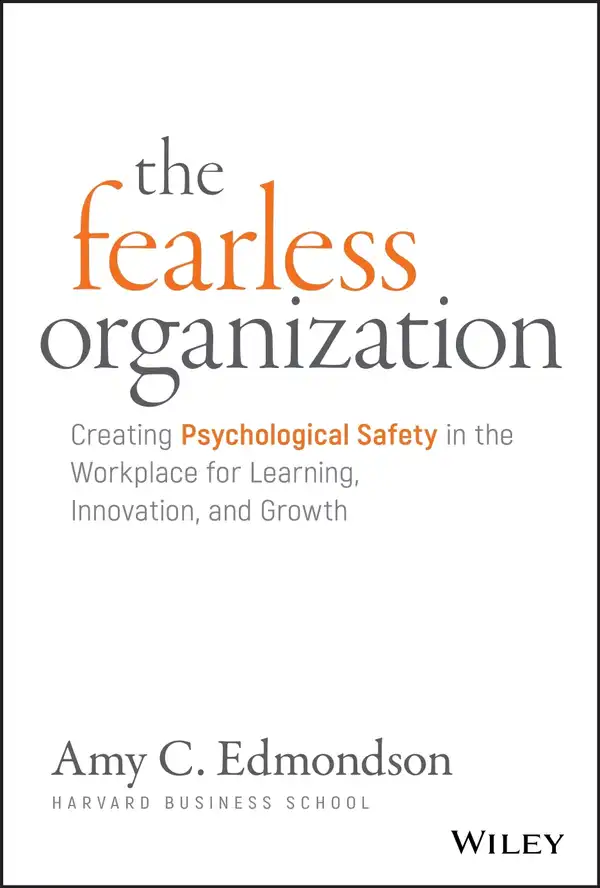Highlights
- psychological safety exists in work groups, rather than between specific individuals
- Tags: psychological-safety organization-design culture
- I have defined psychological safety as the belief that the work environment is safe for interpersonal risk taking.
- Tags: psychological-safety culture
- Even in a company with a strong corporate culture, you will find pockets of both high and low psychological safety.
- Tags: psychological-safety leadership
- Note: Psychological safety happens at the team level, not at the org level.
- People at work do not need to be crippled by interpersonal fear. It is possible to build environments, such as those showcased in Chapters 5 and 6, where people are more afraid of failing the customer than of looking bad in front of their colleagues.
- Tags: leadership psychological-safety
- Fear inhibits learning. Research in neuroscience shows that fear consumes physiologic resources, diverting them from parts of the brain that manage working memory and process new information. This impairs analytic thinking, creative insight, and problem solving.
- Psychological safety describes a belief that neither the formal nor informal consequences of interpersonal risks, like asking for help or admitting a failure, will be punitive.
- Tags: psychological-safety culture leadership
- Psychological safety is about candor, about making it possible for productive disagreement and free exchange of ideas.
- Further, psychological safety describes a temporally immediate experience. Whereas trust describes an expectation about whether another person or organization can be counted on to do what it promises to do in some future moment, the psychological experience of safety pertains to expectations about immediate interpersonal consequences.
- Tags: psychological-safety culture
- In any challenging industry setting, leaders have two vital tasks. One, they must build psychological safety to spur learning and avoid preventable failures; two, they must set high standards and inspire and enable people to reach them.
- One of the most important things to keep in mind, wherever you work, is that the failure of an employee to speak up in a crucial moment cannot be seen.
- Tags: psychological-safety
- motivation by fear is indeed highly effective – effective at creating the illusion that goals are being achieved.
- Tags: leadership culture
- Exhorting people to speak up because it’s the right thing to do relies on an ethical argument but is not a strategy for ensuring good outcomes. Insisting on acts of courage puts the onus on individuals without creating the conditions where the expectation is likely to be met.
- Tags: psychological-safety leadership
- Note: If you want people to feel safe speaking up, you need to systematize psychological safety.
- For speaking up to become routine, psychological safety – and expectations about speaking up – must become institutionalized and systematized.
- Tags: organization-design psychological-safety
- failure archetypes include preventable failures (never good news), complex failures (still not good news), and intelligent failures (not fun, but must be considered good news because of the value they bring).
- Tags: culture psychological-safety learning

Table of contents
Links to